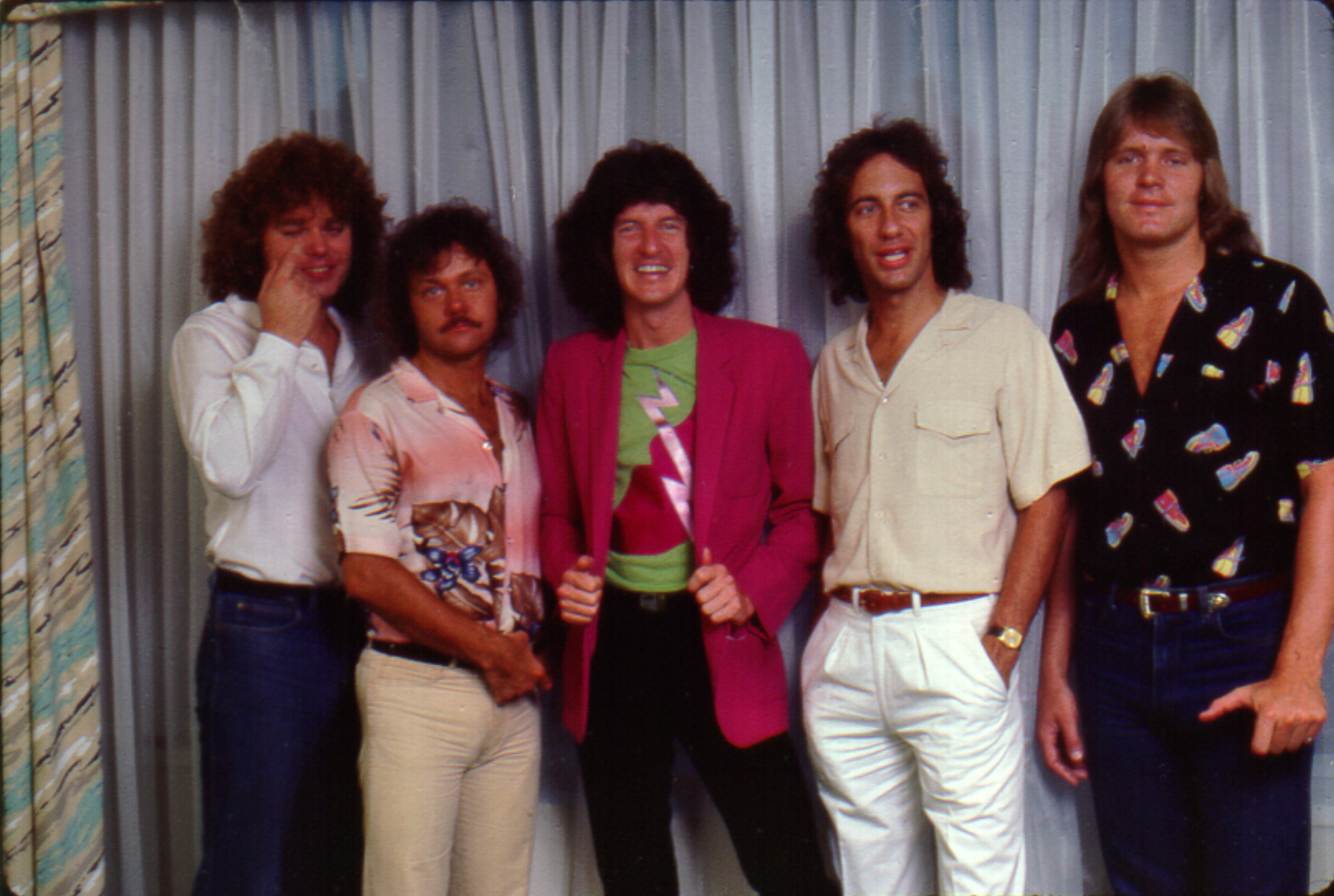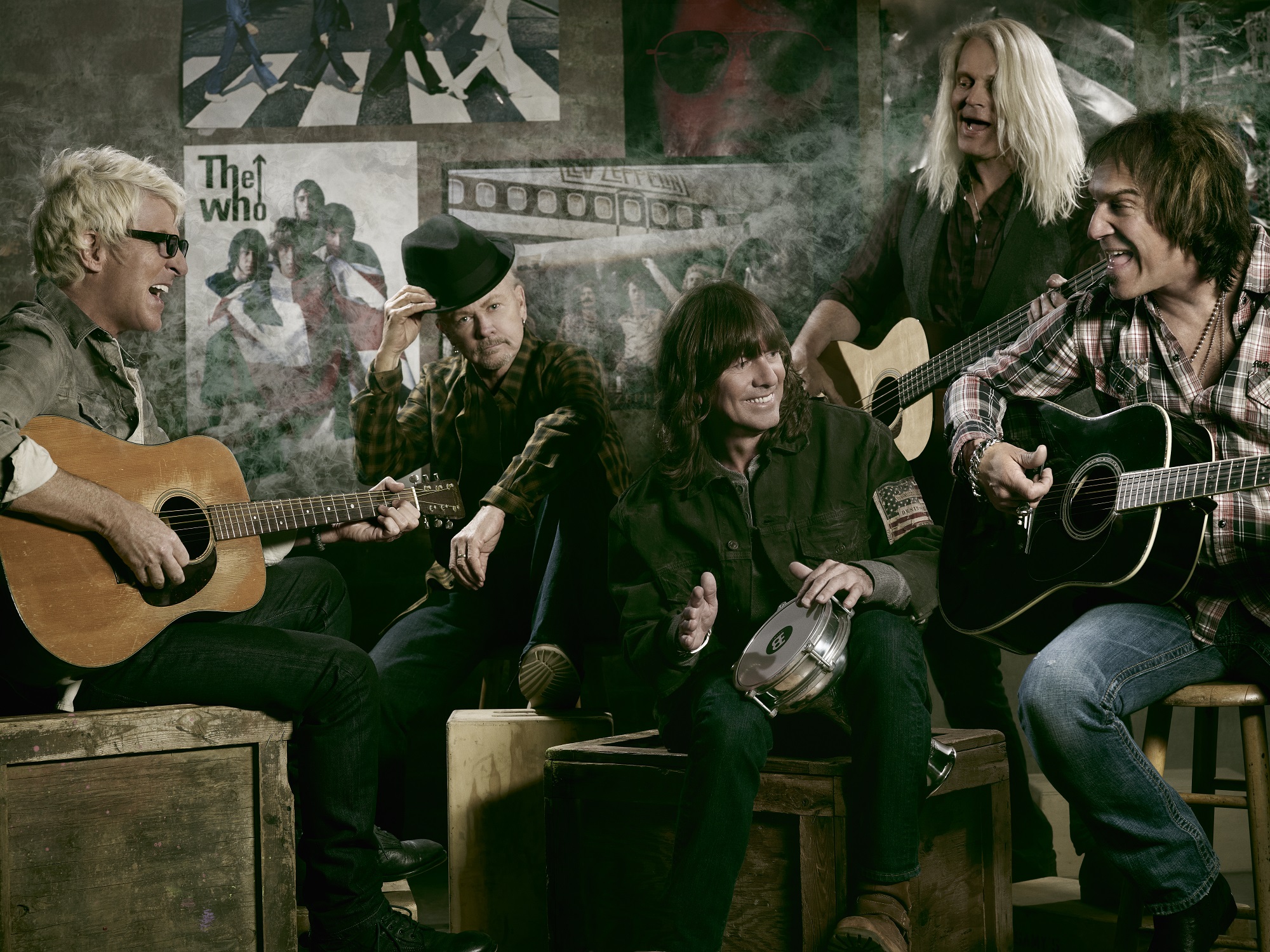REO Speedwagon frontman Kevin Cronin admits that the band made a major mistake at the start of the 1980s.
“When the Hi Infidelity album came out in 1980 we made a career changing tactical error,” he says. “At the time, there were two camps in the band. I was in the one that wanted us to come over to the UK and Europe and tour; after all, most of my musical heroes were from Britain. But there was another camp which didn’t want to make that trip – and that’s the one which won out.”
“That’s why our following over there isn’t as big as we’d now like it to be. We can’t expect to headline big venues. However, we are looking forward to touring in the winter.”
REO will be special guests on Status Quo’s final electric series of dates in December, and Cronin is very enthusiastic.
“I think Status Quo means as much in America as we mean in Europe, ha! But it gives us the chance to play in front of huge crowds, to win over lots of people who don’t much about us right now. It’s a challenge, like the one we faced at the start of our career, when we opened for bands like Grand Funk Railroad and Black Oak Arkansas.”
And you can bet most of the 10 songs Cronin has selected as his faves from his 40-plus years fronting REO will be in the setlist…

Music Man (from REO/T.W.O, 1972)
“This is the song that got me in the band. I had put up flyers in every record store in Chicago, advertising the Musicians Referral Service. It was a company I had invented, and it didn’t really exist. Now Gary Richrath, who was REO’s guitarist, had seen the flyers, and the band were looking for a singer, because Terry Luttrell, who had been the vocalist on their first album (R.E.O. Speedwagon, 1971) wasn’t working out.
"So, he called the MRS, to see if we had any rock style singer/songwriters on our ‘books’. Of course, there was just me in the MRS. But I told Gary, in a very professional voice, that I had gone through our extensive records and there was one guy called Kevin Cronin who fitted what he was looking for! Gary came up to my little apartment and I had just finished writing this song.
"The lyrics were about how I hoped my music life would go if things went my way. Gary heard it, said it was what REO were looking for, and offered me the job! Music Man became the catalyst for the way our career would go over the next decade. And we still play it live.”
Ridin’ The Storm Out (from Ridin’ The Storm Out, 1973)
“This song is about the time Gary and I went to Colorado. We decided to go for a hike in the Rocky Mountains, as it was a nice day. Now, neither of us had seen a mountain before, and we were unaware how quickly the weather can change. And we got caught in a bad snow storm! The song is also a metaphor for the band’s attitude, and became our mantra. No matter what challenge you face in life, meet it head on.
“For a while, we lived in (burlesque entertainer) Gypsy Rose Lee’s house in Beverly Hills while we were getting the songs ready for this album. We each had a room with a bed in it, and there was a living room with a sofa – and that was all the furniture in the house!
"We brought in a tape machine and recorded the demo version of Ridin’ The Storm Out, and we were so completely excited by what we had, Gary and I played back the demo over and over again. Finally, we felt we had the song that captured what the band were all about. And it put us on the map.”
Keep Pushin’ (from R.E.O, 1976)
“This was the song that got me back in the band. Towards the end of the sessions for Ridin’… I quit or was fired, depending on who you want to believe. I decided to become a solo acoustic artists, and thought I’d be the next Jackson Browne. Mike Murphy was the gut who replaced for two albums. Now, Murph was really good, but stylistically he didn’t fit REO.
"My solo career was faltering, and I went to see the band play live. Afterwards, Neal (Doughty, keyboards) told me that the band have received a petition from a small town in Indiana pleading for me to return. I think it was signed by about 10,000 fans. And what sealed it for them was they’d gotten hold of my demo for Keep Pushin’, and that coupled with the fact they knew it wasn’t working with Murph and the petition convinced them to get me back.”
Time For Me To Fly (from You Can Tune A Piano, But You Can’t Tuna Fish, 1978)
“I had a demo version of this song on the same tape as the demo for Keep Pushin’. I wrote it in Boulder, Colorado, inspired by the Rocky Mountains. However, John Stronach, who produced R.E.O., didn’t like the song. And the rest of the band agreed with him. It blew my mind that they judged it so harshly because it only had three chords. Their attitude was that didn’t sound like an REO song! For me, that was crazy.
"I was the singer and the writer, so that should have been enough to make it a song we could record. But it was still turned down. But for the next album, this song came up again, and I convinced Gary, who co-produced it with me, that if it was arranged differently, then it would be very powerful and a proper REO track. And it’s become the fulcrum of our live set. You can feel people’s hair standing up whenever we start to play this. It send shivers down my spine, because it means so much to all of us.”

Roll With The Changes (from You Can Tune A Piano, But You Can’t Tuna Fish, 1978)
“It’s got the same sentiment as Keep Pushin’ and Ridin’ The Storm Out. While I was out of REO, the band relocated to California, so when I rejoined I knew I had to do the same thing. Now, I loved Chicago, and it wasn’t an easy thing for me to do. However, rather than fly I decided to drive across the country, so that I could slowly adjust to the situation, and see all the changes as they began to happen.
"I loaded up a U-Haul van with my stuff and set out on adventure. As I drove, the idea for the song came to me. At one time, I was driving with my left hand only, using the right one to write down lyrical ideas as they came to me. If I had to choose just one song I’ve written to play for John Lennon if I bump into him in the afterlife, then this would be it!”
Keep On Loving You (from Hi Infidelity, 1980)
“At the time, Epic Records were ready to drop us. They insisted we had to have a radio friendly song on our next album, which was Hi Infidelity. And everyone in the band and around us thought if anyone could come up with that song, then it would be me. So, I had the pressure of all those people counting on me. One night, I woke up at 4am with these three single piano chords stuck in my head.
"They were still there the next day, so I went down to S.I.R. Studios, where we were rehearsing, sat down at Neal’s piano and started to play these chords. Now, usually with us when somebody comes up with a good musical idea and begins playing it, everyone else joins in and we take it from there. But I must have played this part about 100 times, and no-one was taking any notice.
"Finally, though, Gary plugged in his Les Paul to a giant stack of Marshalls and started playing something. Now, I am convinced the only reason he did this was to try and drown me our. But when I heard what he was doing I jumped up and said, ‘That’s exactly what this song needs!’. And the song took off from there.
"Amusingly, when Epic heard our demo of the song, they didn’t think it was good enough. They weren’t even gonna put this out as a single, but we persuaded them, and it got to number one in America!”
Take It On The Run (from Hi Infidelity, 1980)
“Gary would record ideas on an eight-track studio in his house. I’d go up there and go through them to pick out what I thought worked. On this one occasion, I sat there for hours, going through everything Gary had done, and nothing really stuck out. When we’d finished, I asked him if he had anything more. And that’s when he pulled out this one slow thing he called Don’t Let Me Down.
"As soon as I heard it, I knew it could be awesome. This really grabbed me by the nuts. So, the two of us then developed it together, and one of the things we did was change the title to Take It On The Run. The opening line is so special: ‘Heard it from a friend, who heard it from a friend…’. Somehow, it captures the imagination and hooks you in.
"As with Keep On Loving You, Epic didn’t want to release this as a single. They were gonna go for In Your Letter instead. But I put my foot down, and we all demanded they went for Take It On The Run. Again, we were right, It was Top Five in the States!”
Can’t Fight This Feeling (from Wheels Are Turnin’, 1984)
“After the huge success with Hi Infidelity, we had a misfire with the next album Good Trouble in ‘82. Everyone was putting pressure on us to get back in the studio as quickly as we could to ensure we made the most of the situation. As I was the main writer, I was the person who had to get the songs done. But I told them I didn’t have enough of a good enough standard ready.
"I should have really stuck by my guns and refused to be badgered into recording until I was prepared. But in the end I went with the flow, and that was a mistake. The point is that, had I been allowed to develop and write at my own pace, then Can’t Fight This Feeling would have ended up on Good Trouble, and it might have helped our momentum. I had written the verses years earlier, and had actually done a demo when I went solo for a brief time in the mid-70s.
"I had even played it to Clive Davis, who was the head of Arista, but he turned it down, saying it wasn’t good enough! But it was a number one single in the States, which shows that even the best music business people can get things wrong. I love to remind Clive he once turned down a charting topping single!”
That Ain’t Love (from Life as We Know It, 1987)
“You know what brought home to me how powerful this song is? Five or six years ago, I was in Nashville, re-recording some of my tracks with local musicians. Rebecca Bramlett came in and sung on a demo for the new version of That Ain’t Love. She did two takes, but in that time created a whole new song.
"What Rebecca did gave me goose bumps. Listening back to her brought me to tears. It was an awakening. It made me realise that if you put all of your heart and soul into a performance, then it immeasurably enhances a song. I always considered myself a writer, and not necessarily a singer.
"But after I heard how Rebecca transformed this song, it got me to put so much more of myself into singing. As a result, I have re-evaluated the way I perform this song, and I think it’s brought the emotion to the surface.”

Smilin’ In The End (from Find Your Own Way Home, 2007)
“It’s incredible to think this song is already nine years old! Maybe, like the rest of the album, it is rather overproduced and it could have been done in a more leaner fashion. Lyrically, it’s very much about me, and that meeting with Clive Davis I mentioned earlier. When I walked out of his office, my first thought was, ‘What’s wrong with him?’
"But it’s about more than just that one incident. It refers back to Can’t Fight This Feeling, and the way you should express the feelings you and not keep them bottled up. If you don’t release your emotions it can hurt you internally. Just admit when you are afraid or insecure.”
Kevin Cronin was talking to Malcolm Dome.
REO Speedwagon: We Thought Every Album Would Sell 10 Million Copies...
